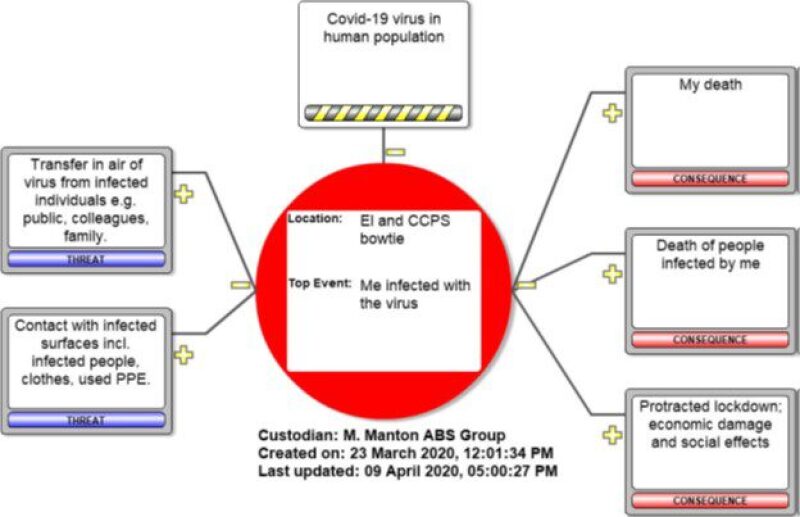This is my third attempt to write this column and the second topic. I was originally going to do an expanded version of the Production and Facilities monthly email about how my reaction to the COVID-19 pandemic was leading me to make some poor choices with respect to the 3 Rs:
- I am reading less and watching more talks and panel sessions, even though I know that retention of the material will be much worse than with reading or trying to do something.
- I am finding that writing, especially in Word rather than PowerPoint format, is even more of a struggle than it had already become over the past decade.
- And even with arithmetic, I am off to find my calculator or the calculator app on my phone instead of guesstimating the rough-order-of-magnitude and reasonableness of the number (e.g., when estimating the active infections per 100,000 of my fellow citizens from the daily totals, when assessing the relative risks of heading to a local grocery store vs. opting for the lower-risk, higher-cost, less-rewarding, and more-time-consuming option of online shopping).
As some of you know already, that led me to think about the human factors in risk mitigation and safety management and why we sometimes elect to take unnecessary risks. And so, I reread the SPE technical report, “Getting to Zero and Beyond: The Path Forward. Improving Safety in the Oil and Gas Industry.”
The forward has a great quote from Lord Cullen: “… It follows that the management of safety has to include assessing human factors and taking them into account. The implications of human factors for safety must be fully realized.”
In an IOGP article posted in 2017, he discussed human factors as a matter of life and death.
This led me to think that I should maybe address this “elephant in the room” near the top of the article rather than at the end.
Our Role in the World War Against the nCoV SARS-2 Virus and COVID-19
In a time of war, there is always clear and present danger, so that our personal and even constitutional freedoms and the rights of assembly need to be limited for the common good.
In both times of war and other unsafe situations, the heroes go one step beyond the expectations and norms to protect their mates (that nice Australian collective noun) and families.
That line of thinking led me to revisit the Energy Institute’s Bow-Tie Risk Analysis for COVID-19.

This was addressed in an SPE Live event, “COVID-19 and HSE in Oil & Gas,” hosted by 2017–2020 SPE Technical Director for HSE Johana Dunlop in April 2020.
Hence, my problem in making the time to read.
Moreover, a true hero will take one more step in thinking about “helping your team to heal.” I highly recommend the article by David Kessler published in the Harvard Business Review. This was posted onto my LinkedIn feed by a former business colleague, Corrina Bryson of Simplify Complexity Inc., who is now on the board of the AER, ERA, and CNSPB, but still makes the time to post things that might be useful to her “mates” and former colleagues.
I find Kessler’s idea, that we are all grieving something in this war against nCoV-SAR-2, a fascinating and convincing proposition. As he says at the end of the article, many of us may also know someone who is actually grieving the loss of a loved one or friend. In which case, it is particularly important to provide them with additional support, especially at this time of the year, and when things start to get back to normal for the rest of us with access to a vaccine.
Why an HSE&S rant from the TD of Production & Facilities? Why not? HSE&S and commercial matters, what the SPE calls “Management,” are capstone functions affecting all the SPE technical communities. In the same way, DSEA is a foundation function for all communities. But I digress.Going One Step Beyond as a Professional
When I was the managing partner of an employee-owned consultancy, I often used this slower time of the year to challenge my colleagues with three questions:
- What is the “wow factor” that encourages clients to come back to seek our advice?
- Are you doing enough to “see and be seen?
- ”See what the clients and competitors are doing and how we might help.
- Let others see that we are engaged in trying to address common problems.
- How much of our time and money should we re-invest in training and new software?
It should be self evident that active involvement in the SPE, through the delivery of SPE talks, papers or training courses, is an integral component of the effort to “see and be seen.” The SPE also provides key resources in terms of ideas, training services, and seeing how new software is being applied or tested by others. In the good old days of face-to-face SPE events, I always tried to sit with at least two people that I did not know or could not recall having met before, so that I could learn something about them, their work, their interests, and their companies. Who knows when that intelligence may come in handy for us, one of our mates, or a client? (As a result, my wife and I have had some great road trips and have seen some things that we would never have found on our own and/or from a guidebook.)
In my experience, many Young Professionals tend to assume that we are studying a problem to reach a conclusion. However, the key objectives of most studies are:
- Recommendations and/or estimating the value of obtaining additional information.
- Business decisions or options.
- Identification of opportunities and risks.
- Uncertainty management and risk mitigation plans/options.
- Unresolved questions and the options to manage the “unknown unknowns.
”It is even better if we can go one step beyond what was requested to identify some low-hanging fruit that might quickly pay off the time and costs invested in executing the project.
Irrespective of whether you are a consultant, an employee, or an academic, you want to leave a positive impression with those around you in order to “get on in this world.” Hopefully, years later, “the power that be” at that time will vaguely remember you as a good engineer, data analyst, chemist, or whatever, who was willing to go one step beyond what was required or expected.Taking a Step Beyond To Make Our New Year’s Resolutions SMART
While it may be implicit that a “firm action plan” should meet the criteria of the SMART acronym, I find it helpful to make sure that my resolutions are:
S: Specific
M: Measurable
A: Attainable
R: Relevant
T: Time limited
So, with respect to my involvement in the SPE, my 2020 resolutions included:
- Read at least three JPT articles per month
- Attend 1–2 meetings or virtual events every month
- Read one nonfiction book per quarter
As stated at the outset, I have failed big time this year with respect to reading, but I have watched a lot of webinars and virtual SPE events instead.
Based on this quick progress review, my holiday reading list has just doubled in length.
- So, it’s now 15 JPT articles in December 2020, going back more than 6 months
- The New Map: Energy, Climate, and the Clash of Nations by Daniel Yergin, Penguin Press (2020)
- Unconventional Gas and Tight Oil Exploitation by Roberto Aguilera, editor, SPE (2018)
This is doomed to failure … it is just not attainable at the rate at which I read.
However, I did meet the fiction reading target this quarter, including Hamnet (titled Hamnet and Judith in Canada) by Maggie O’Farrell, and loved it.
To those who have celebrations at this time of the year: Happy Holidays!
To our mates in Australia and New Zealand: Have a great summer vacation. Congratulations on your part in collectively doing a great job in managing COVID-19 in order to be able to have an in-country vacation!
Wishing you all a healthy, happy, and rewarding 2021.


